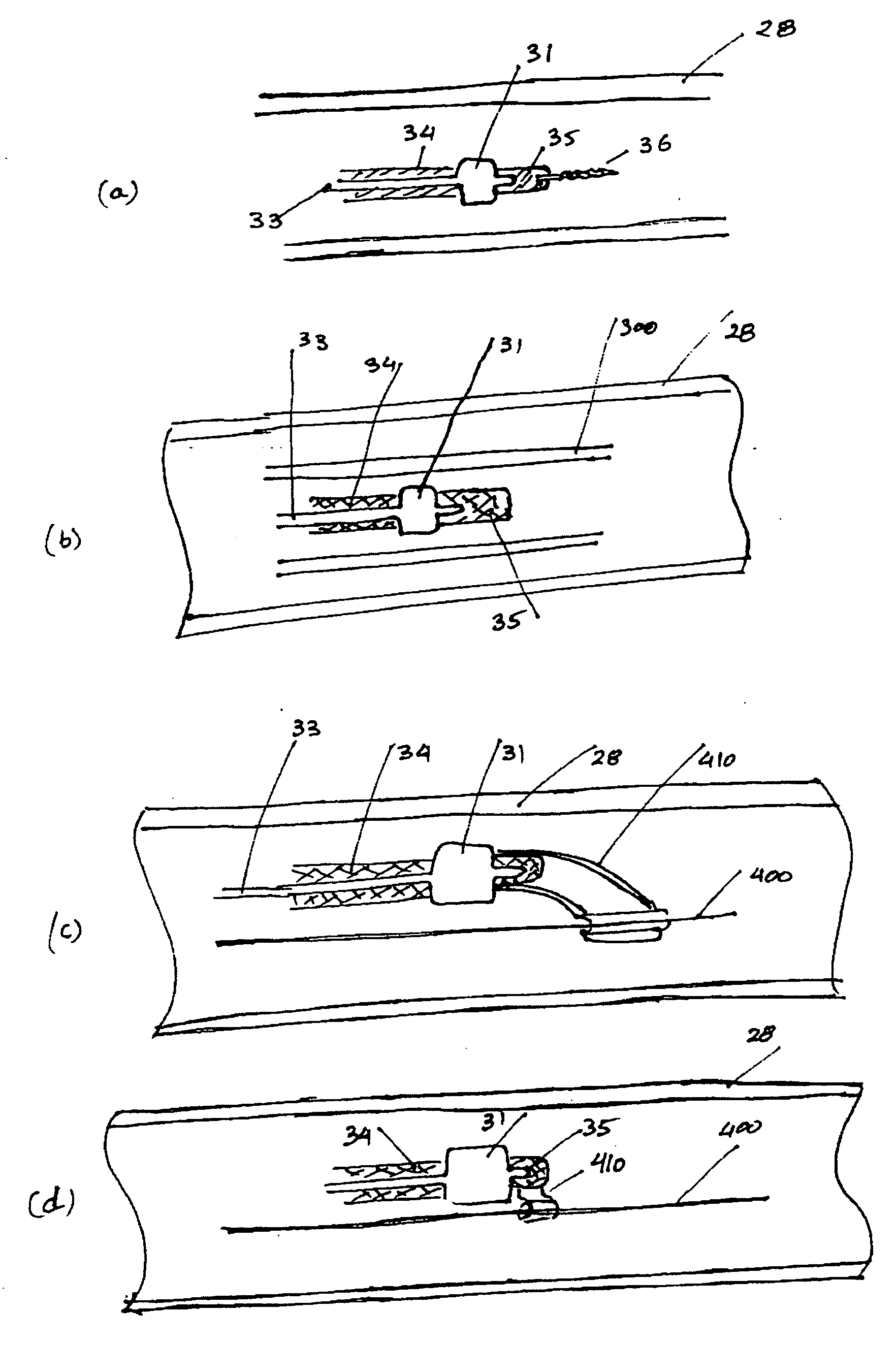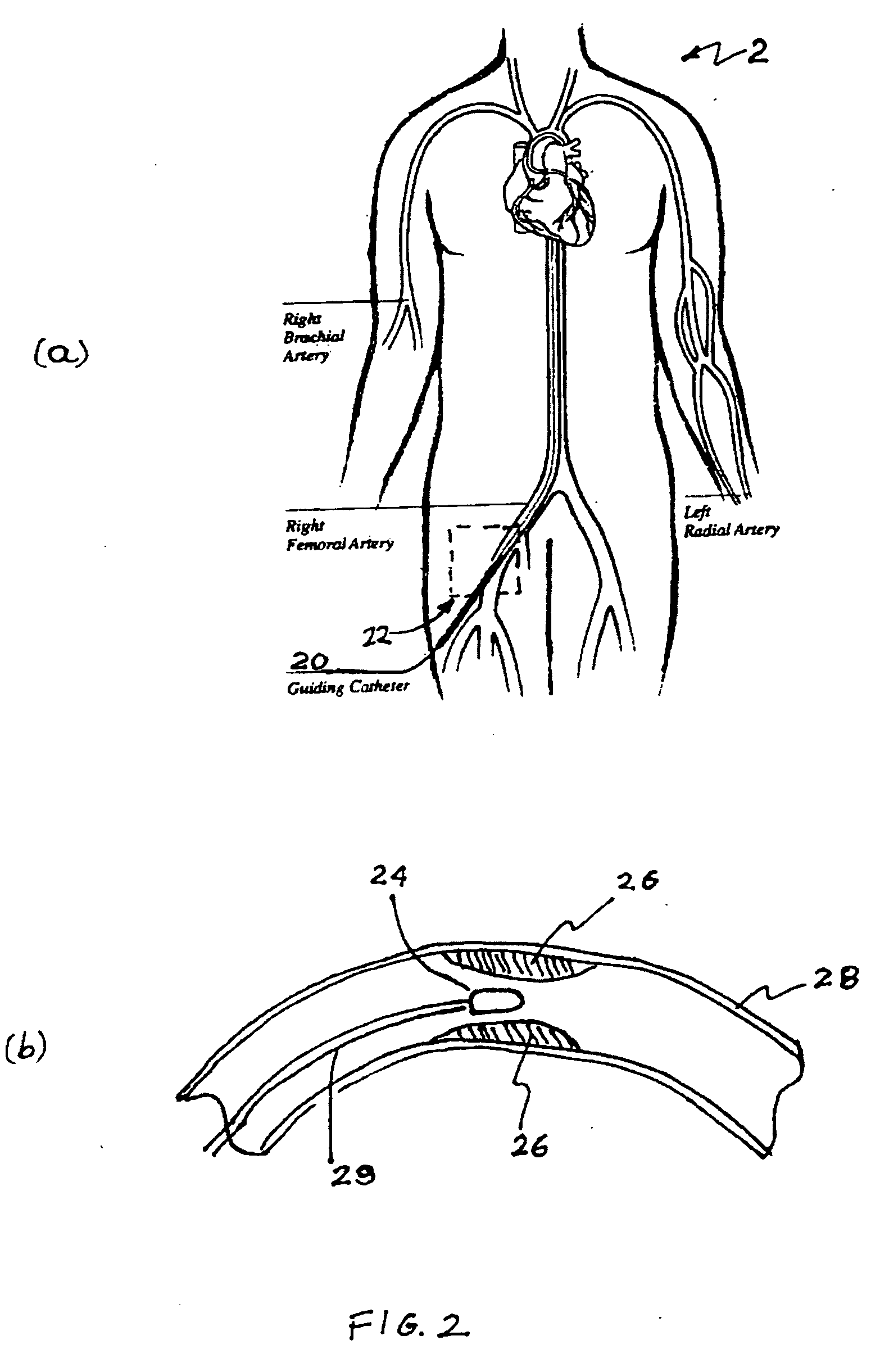Radio-frequency device for passivation of vascular plaque and method of using same
a radiofrequency device and plaque technology, applied in the field of local and regional vascular therapies, can solve the problems of ohmic heating in the tissue, temperature rise in the vicinity, temperature rise and distribution in the treated region, and achieve the effect of less prone to rupture and embolization
- Summary
- Abstract
- Description
- Claims
- Application Information
AI Technical Summary
Benefits of technology
Problems solved by technology
Method used
Image
Examples
Embodiment Construction
[0041] Unless otherwise defined, all technical and scientific terms used herein have the same meaning as commonly understood by one of ordinary skill in the art to which this invention belongs. In case of conflict, the present specification, including definitions, will control.
[0042] The words “a”, “an”, and “the” as used herein mean “at least one” unless otherwise specifically indicated.
[0043] The present invention makes reference to “atherosclerotic”, “inflammatory”, and “vulnerable” plaque. Atherosclerosis is commonly referred to as a “hardening” or “furring” of blood vessels, but this is an oversimplification. Vascular lesions, known as atheromas, develop in the vessel wall and, in late stages, may suddenly rupture (e.g., a vulnerable plaque or acute inflammatory plaque) and reduce or totally stop blood flow in the lumen (i.e., stenosis), leading to damage of the tissue downstream which has lost needed blood flow (i.e., ischemia).
[0044] In the context of the present invention...
PUM
 Login to View More
Login to View More Abstract
Description
Claims
Application Information
 Login to View More
Login to View More - R&D
- Intellectual Property
- Life Sciences
- Materials
- Tech Scout
- Unparalleled Data Quality
- Higher Quality Content
- 60% Fewer Hallucinations
Browse by: Latest US Patents, China's latest patents, Technical Efficacy Thesaurus, Application Domain, Technology Topic, Popular Technical Reports.
© 2025 PatSnap. All rights reserved.Legal|Privacy policy|Modern Slavery Act Transparency Statement|Sitemap|About US| Contact US: help@patsnap.com



